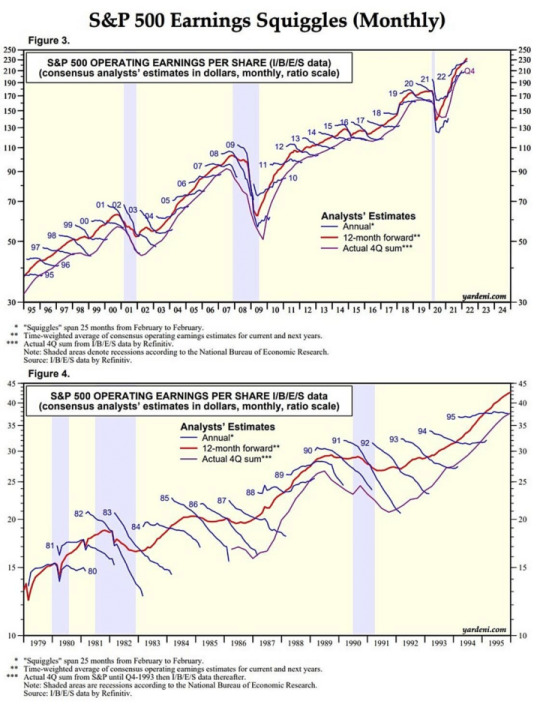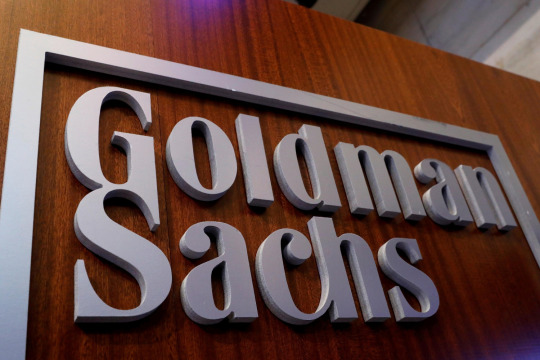#goldmansachs
Photo

Google became the latest tech company to cut thousands of jobs after two years of hiring spree
Google’s parent company Alphabet became the latest tech giant to announce layoffs.Read more...
https://qz.com/google-tech-layoffs-2023-alphabet-sundar-pichai-1850010865
#google#economyoftheunitedstates#amazon#artificialintelligence#chromeos#layoff#labor#alphabetinc#electronicarts#salesforce#companies#pichai#sundarpichai#microsoft#alphabet#chrismcdonald#goldmansachs#business#Ananya Bhattacharya#Quartz
1 note
·
View note
Text
Amazon is hiring

Hey graduates, Amazon is hiring for Associate.
Go and apply!!!
Link in BIO
📌𝘊𝘰𝘮𝘮𝘦𝘯𝘵 "hire" 𝘪𝘧 𝘪𝘯𝘵𝘦𝘳𝘦𝘴𝘵𝘦𝘥
📢 Follow @gethired01
📢 Follow us for daily update
.
#tcs#infosys#amazon#google#adobe#microsoft#goldmansachs#morganstanley#internship#internshipstudent#hiring#2023#freshers#recruitment#graduatejobs#engineering#engineeringmemes#coding#it#engineeringlife#engineerjobs#india#jobsinindia#unacademy
0 notes
Photo

LOAN IMAGE: Scott Wadler, Alec Fox, Michael Weinberg & Edmund Aramayo DATE: 04/12/2024 ADDRESS: 1895 Sidewinder Drive MARKET: Park City, Utah ASSET TYPE: Hotel LENDER: Goldman Sachs (CMBS) (@GoldmanSachs) OWNER: Driftwood Capital (@DriftwoodCapital) BROKERS: Michael Weinberg (@Weino_Mike), Scott Wadler (@SWadler1), Edmund Aramayo (@Edgy_A) & Alec Fox (@Alecfox1) - Berkadia (@Berkadia) LOAN AMOUNT: $33,000,000 LOAN TYPE: Refinance LOAN TERMS: 5-Year Term with Full-Term IO #Miami #RealEstate #tradedmia #MIA #TradedPartner #ParkCity #Hotel #DriftwoodCapital #GoldmanSachs #MichaelWeinberg #ScottWadler #EdmundAramayo #Berkadia #AlecFox
#Miami#RealEstate#tradedmia#MIA#TradedPartner#ParkCity#Hotel#DriftwoodCapital#GoldmanSachs#MichaelWeinberg#ScottWadler#EdmundAramayo#Berkadia#AlecFox
0 notes
Text
Tech Giants Apple, Amazon, Google, and Facebook Lead Stock Market Surge, Boosting Investor Confidence
#AlphabetsGoogle #amazon #analysts #Apple #buyzones #CloudComputing #confidence #corporateearnings #economicgrowth #economists #equities #facebook #February #goldmansachs #InterestRates #investors #jobs #jobsreport #longtermprospects #march #marketdirection #messagingapp #onlineadvertising #partnership #positiveoutlook #pullback #regulation #slowinggrowth #Stockmarket #streamingservice #surge #techgiants #technologysector #USeconomy #userengagement #WhatsApp
#Business#AlphabetsGoogle#amazon#analysts#Apple#buyzones#CloudComputing#confidence#corporateearnings#economicgrowth#economists#equities#facebook#February#goldmansachs#InterestRates#investors#jobs#jobsreport#longtermprospects#march#marketdirection#messagingapp#onlineadvertising#partnership#positiveoutlook#pullback#regulation#slowinggrowth#Stockmarket
0 notes
Text

Private Credit is growing in Asia!
Goldman Sachs and Mubadala, the sovereign wealth fund of the Emirate of Abu Dhabi, have officially entered into a substantial financial agreement worth $1 billion.
For those who may not be familiar, Private Credit involves the practice of providing loans (rather than acquiring ownership stakes) to businesses or individuals typically excluded from traditional banking services. This lending practice targets higher-risk borrowers, leading to elevated interest rates on the loans. Additionally, in the event of insolvency, these lenders are prioritized for repayment ahead of other creditors.
Interestingly, Private Credit is one of the fastest-growing asset classes. It has almost $1.4 trillion in AUM with over $350 billion awaiting deployment! Moreover, Moody's Corporation estimates the market to reach at least $2 trillion by 2027!
According to a report by HSBC, Asia’s Private Credit landscape is still nascent but its AUM has seen an average growth rate of 29%!!!
Thus, in a bid to monetize on the growing Asian Private Credit opportunities, investment banking giant Goldman Sachs and Abu Dhabi’s sovereign wealth fund Mubadala Investment Company have signed a partnership deal worth $1 billion!
According to the statement, both companies have agreed to co-invest in Private Credit opportunities in the APAC region with a particular focus on India!
Follow ProCapitas for more financial insights.
0 notes
Link
Cristina Alger, former analyst at Goldman Sachs and author of "The Darlings," talks about what it was like during the financial disaster of 2008 in New York. This full interview from a 2012 episode of "Conversations On The Coast with Jim Foster" can be heard now wherever you get your podcasts.
#2008financialdisaster#21stcentury#authorinterview#book#coc#conversationsonthecoast#cristinaalger#financialscandal#financialthrillers#goldmansachs#jimfoster#literaryfiction#money#mysterythriller&suspense#newyork#reading#sanfrancisco#sf#thedarlings#wallstreet
0 notes
Text

İA HABER AJANSI Goldman Sachs ve Morgan Stanley bilançolarını açıkladı https://bbcturk.com/goldman-sachs-ve-morgan-stanley-bilancolarini-acikladi/31281/?utm_source=dlvr.it&utm_medium=tumblr www.bbcturk.com https://iahaber.com
0 notes
Text
Global Banks Predict Smooth Sailing, But U.S. Companies Sound the Alarm! The Shocking Twist You Didn't See Coming!
As we approach the year 2024, analysts are indicating a shift in the predicted U.S. economic landscape. Despite initial forecasts of a recession over the past two years, it seems the anticipated downturn is no longer on the horizon. However, businesses and investors remain cautious, expecting a deceleration driven by subdued consumer demand.
This contrast between perennially optimistic investment bank analysts and more reserved money managers is not a new phenomenon. What distinguishes the current situation is the notable prudence demonstrated by some leading companies as they outline their strategies for the upcoming year.
Those in the realm of real money management express a clear preference for the cautious approach. Sell-side analysts, who have been overly optimistic about growth prospects, Federal Reserve rate cuts, and a consumer recovery, are viewed with skepticism after months of inaccurate predictions.
Patrick McDonough, a portfolio manager for PGIM Quantitative Solutions, advises taking some of these sell-side forecasts with a grain of salt and leaning more toward the perspectives offered by companies.
Major banks, including Goldman Sachs, Morgan Stanley, UBS, and Barclays, project global growth constraints in 2024 due to higher interest rates, expensive oil, and a weakened China. Notably, the likelihood of a recession is deemed low, a stark departure from the recession predictions made by many banks a year ago.
Company sentiments align with a more somber outlook compared to the previous year. According to Deutsche Bank, based on insights from 150 earnings calls in the third-quarter reporting season, companies generally describe demand as somewhat weak, prompting continued inventory reductions to adapt to sluggish goods demand.
Words used by companies to characterize demand include soft, sluggish, slow, lackluster, choppy, muted, constrained, challenging, weak, pressured, and uneven.
Walmart, for instance, acknowledges a changing consumer behavior, with its CFO, John David Rainey, expressing caution at a recent conference. Similarly, Dollar General reports a decline in gross profit and anticipates continued customer spending constraints in discretionary categories in 2024.
While consumer giant Procter & Gamble remains optimistic about its performance, acknowledging growth in market share, the overall disparity in outlooks does not concern fund managers.
Also Read | 2024 Credit Rating U.S. and China on the Brink, Turkey's Surprise Comeback, and Global Economic Shake-up!
Their primary focus is on whether the Federal Reserve can prevent a recession, manage inflation, and safeguard consumers without over-tightening policies.
The recent update from the Federal Reserve indicates an awareness of the need for balance, with officials aiming to prevent an unnecessary economic slowdown caused by excessive policy tightening.
Several companies are already experiencing the effects of the anticipated slowdown, particularly those heavily reliant on consumer spending.
Also Read | Breaking News: Tesla Faces Recall Threat Over Shocking Suspension Failures! What You Need to Know Before Driving Your Model S or X!
PGIM's McDonough notes a discernible slowdown in consumer-based companies, emphasizing the importance of monitoring how the Federal Reserve navigates the delicate balance between averting recession and controlling inflation.
Recent surveys, such as those from the Institute for Supply Management and the Conference Board, indicate a cooling trend in consumer spending, with a significant percentage expecting a recession within the next year.
Read the full article
0 notes
Text
Mai si può conoscere il futuro dei mercati azionari

Le previsioni sono inutili: Perché non bisogna dare retta ai guru.
"Le previsioni di mercato sono difficili... soprattutto quando riguardano il futuro" - Niels Bohr
Bene, abbiamo avuto una piccola licenza poetica, ma il punto è che anche se ci proviamo, le previsioni del futuro sono difficili nel migliore dei casi e impossibili nel peggiore. Se potessimo prevedere con precisione il futuro, gli indovini vincerebbero tutte le lotterie, i sensitivi sarebbero più ricchi di Elon Musk e i gestori di portafoglio batterebbero sempre l'indice.
Tuttavia, possiamo analizzare ciò che si è verificato in precedenza, eliminare il rumore del presente e discernere i possibili risultati del futuro. Il problema principale di Wall Street, sia oggi che in passato, è la costante mancanza di considerazione degli eventi imprevisti e casuali che inevitabilmente si verificano.
Ne abbiamo visti molti, dalle guerre commerciali alla Brexit, alla politica della Fed e a una pandemia globale negli ultimi anni. Eppure, prima che ognuno di questi eventi causasse una flessione del mercato, gli analisti di Wall Street si sono sbizzarriti nel dire che non sarebbe successo.
Ad esempio, il 7 dicembre 2021 e scritto un articolo sulle previsioni per il 2022.
"C'è una cosa di Goldman Sachs (NYSE:GS) che è sempre coerente: sono 'rialzisti'. Naturalmente, dato che il mercato è più spesso positivo che negativo, "paga" essere rialzisti quando la propria azienda vende prodotti a investitori affamati.
È importante ricordare che Goldman Sachs si è sbagliata quando era più importante, in particolare nel 2000 e nel 2008.
Tuttavia, in linea con la sua tradizionale tendenza rialzista, il capo stratega azionario di Goldman, David Kostin, ha previsto che il S&P 500 salirà del 9% a 5100 alla fine del 2022.
Come osserva, ciò "rifletterà un rendimento totale prospettico del 10% compresi i dividendi".
Il problema, ovviamente, è che il S&P 500 NON ha chiuso l'anno a 5100.

S&P 500 Daily Chart
Non è solo Goldman Sachs a fare previsioni rialziste ed errate, ma la stragrande maggioranza degli analisti di Wall Street. Tali errori di previsione sono più evidenti nelle aspettative sugli utili a termine.
Ed Yardeni tiene traccia delle previsioni storiche sugli utili e delle variazioni per ogni anno. Le aspettative degli analisti sono chiaramente sbagliate di circa il 30% in media.

S&P 500 Earnings Monthly Chart
Nonostante i crescenti segnali di rischio di recessione, gli analisti stanno tornando ad essere sempre più ottimisti sulla crescita degli utili fino al 2024. Naturalmente, per generare tali utili è necessaria una crescita economica sostanzialmente più forte.

S&P 500 NTM EPS Chart
Quindi, la domanda diventa: quanta fiducia dobbiamo avere nelle stime di Wall Street quando si tratta di investire?
Le previsioni sul futuro hanno una scadenza
Alla fine degli anni '90 è stato condotto uno studio sull'accuratezza delle "previsioni", prendendo in considerazione le previsioni di diverse professioni, tra cui sensitivi e meteorologi. Lo studio giunse a due conclusioni.
- I"meteorologi" sono i predittori più accurati del futuro,
- La capacità di previsione era accurata fino a soli 3 giorni.
Soprattutto, una volta che le previsioni si estendono oltre i 3 giorni, l'accuratezza non è migliore del lancio di una moneta.
Un quarto di secolo dopo, la rivista Economist ha analizzato i modelli informatici e la loro accuratezza nelle previsioni meteorologiche. Sorprendentemente, nonostante il massiccio aumento delle capacità di analisi dei computer, la maggiore raccolta di dati e il miglioramento dei modelli, l'accuratezza non è migliorata.
Oggi come allora, l'accuratezza delle previsioni meteorologiche è circa del 100% per 3 giorni nel futuro. Tuttavia, a dieci giorni, l'accuratezza non è ancora migliore del lancio di una moneta.

Weather Forecast Accuracy
Ecco il punto critico. Quando si analizzano i modelli meteorologici, esiste un'enorme quantità di dati osservabili. Dalle temperature superficiali alle zone di alta e bassa pressione, all'umidità, alla qualità dell'aria e a numerosi dati.
Questi dati, raccolti da radar Doppler, radiosonde, satelliti meteorologici, boe e altri strumenti, vengono inseriti nei supercomputer dell'NWS, dove i modelli numerici di previsione sono al lavoro.
Tuttavia, con tutti questi dati, l'accuratezza delle previsioni è buona solo per tre-dieci giorni.
Dato che i mercati sono influenzati da un ampio spettro di input estremamente variabili, dall'economia alla geopolitica, alla politica monetaria, ai tassi di interesse, agli eventi finanziari e, soprattutto, alla psicologia umana, quanto sono accurate le previsioni a 12 mesi dal futuro?
Come investitori, quanto peso dovremmo dare a qualsiasi previsione che si estenda per più di una settimana?
Come muoversi da qui
Nel breve periodo, tutto ciò che conta per gli investitori è la psicologia di mercato a breve termine. Questa psicologia è facilmente visibile nell'analisi tecnica dei dati di mercato. Ecco perché ogni settimana discutiamo con voi i livelli tecnici di supporto e resistenza e la tendenza generale del mercato, rialzista o ribassista.
Nel lungo termine, ovvero nel corso del prossimo decennio, saranno i fondamentali e le valutazioni a determinare il rendimento dei vostri investimenti.
In quest'ottica, il mio compito di gestore di portafoglio è quello di gestire i rischi di mercato. Fare una scommessa "unilaterale" su un potenziale risultato comporta un rischio eccessivo di sbagliare, con un potenziale impatto sul capitale del cliente e un danno per i risultati finanziari.
Per questo motivo, affrontiamo la gestione del rischio sul mercato scegliendo di coprire il rischio e di ridurre le passività potenziali. Data l'attuale struttura del mercato, abbiamo tre opzioni:
- Non fare nulla - Se i mercati si correggono, distruggiamo capitale e tempo in attesa che il portafoglio si riprenda.
- Prendere profitto - Prendere profitto, raccogliere liquidità e ridurre l'esposizione azionaria prima di una correzione aiuta a mitigare i danni di un calo. Tuttavia, in caso di errore, possiamo riacquistare le posizioni, aggiungerne di nuove o ridimensionare le partecipazioni in portafoglio secondo le necessità.
- Hedge - Abbiamo anche optato per la copertura, aggiungendo al portafoglio una posizione "inversa" rispetto al mercato, che ci consente di mantenere intatte le posizioni esistenti. "Scoraggiando il portafoglio", riduciamo efficacemente il rischio azionario (e la relativa distruzione di capitale) durante una correzione del mercato.
Come già detto, in passato abbiamo continuato a utilizzare una combinazione di entrambi i metodi #2 e #3. Non fare nulla ci lascia eccessivamente esposti a uno "shock di volatilità" inatteso nel mercato o a un'inversione della psicologia rialzista.
A nostro avviso, possiamo gestire il rischio o ignorarlo.
L'unico problema dell '"ignorare il rischio" è che da tempo non funziona bene.
Linee guida per gli investimenti
Quando si tratta di investire, tendiamo a ripetere i nostri errori dimenticando il passato. Pertanto, vale la pena di ripetere le linee guida per gli investimenti, in modo da riportare l'attenzione su ciò che conta davvero.
- Investire non è una competizione. Non ci sono premi per chi vince, ma severe sanzioni per chi perde.
- Le emozioni non hanno spazio negli investimenti. In genere è meglio fare il contrario di ciò che si "sente".
- Gli UNICI investimenti che si possono "comprare e tenere" sono quelli che forniscono un flusso di reddito e un ritorno del capitale.
- Le valutazioni di mercato sono strumenti di market timing molto scadenti.
- I fondamentali e l'economia guidano le decisioni di investimento a lungo termine - l'avidità e la paura guidano il trading a breve termine.
- Il "market timing" è impossibile, mentre lagestione dell'esposizione al rischio è logica e possibile.
- L'investimento è una questione di disciplina e pazienza: la mancanza di una delle due può essere distruttiva per i vostri obiettivi di investimento.
- I commenti quotidiani dei media non hanno alcun valore: spegnete la televisione e risparmiatevi il capitale mentale.
- Investire non è diverso dal gioco d'azzardo:entrambi sono "congetture" sui risultati futuri basate sulle probabilità. Il vincitore è colui che sa quando "foldare" e quando andare "all in".
- Nessuna strategia di investimento funziona sempre: il trucco sta nel saper distinguere tra una strategia di investimento sbagliata e una temporaneamente in disuso.
"Il problema principale dell'investitore, e anche il suo peggior nemico, è probabilmente lui stesso" - Benjamin Graham.
Read the full article
#futuro#geopolitica#GoldmanSachs#indovini#investimenti#meteorologia#politicamonetaria#previsioni#psicologiaumana#shockdivolatilità#Supercomputer#tradingonline
0 notes
Text
Grow is hiring

Hey graduates, Grow is hiring for Cyber defence Analyst Intern.
Go and apply!!!
Link in BIO
📌𝘊𝘰𝘮𝘮𝘦𝘯𝘵 "hire" 𝘪𝘧 𝘪𝘯𝘵𝘦𝘳𝘦𝘴𝘵𝘦𝘥
📢 Follow @gethired01
📢 Follow us for daily update
.
#tcs#infosys#amazon#google#adobe#microsoft#goldmansachs#morganstanley#internship#internshipstudent#hiring#2023#freshers#recruitment#graduatejobs#engineering#engineeringmemes#coding#it#engineeringlife#engineerjobs#india#jobsinindia#unacademy
0 notes
Photo

LOAN IMAGE: Scott Wadler, Alec Fox, Michael Weinberg & Edmund Aramayo DATE: 01/10/2023 ADDRESS: 494 Tan Tara Drive MARKET: Osage Beach, MO ASSET TYPE: Hotel LENDER: Goldman Sachs (@GoldmanSachs) & Starwood OWNER: Driftwood Capital (@DriftwoodCapital) BROKERS: Michael Weinberg (@Weino_Mike), Alec Fox (@Alecfox1), Scott Wadler (@SWadler1) & Edmund Aramayo (@Edgy_A) - Berkadia (@Berkadia) LOAN AMOUNT: $60,500,000 LOAN TYPE: Refinance LOAN TERMS: 5 year fixed rate deal, full term interest only #Miami #RealEstate #tradedmia #MIA #TradedPartner #OsageBeach #Hotel #DriftwoodCapital #GoldmanSachs #Starwood #MichaelWeinberg #AlecFox #ScottWadler #EdmundAramayo #Berkadia
#Miami#RealEstate#tradedmia#MIA#TradedPartner#OsageBeach#Hotel#DriftwoodCapital#GoldmanSachs#Starwood#MichaelWeinberg#AlecFox#ScottWadler#EdmundAramayo#Berkadia
0 notes
Text
Goldman Sachs and Morgan Stanley Clash on Fed's Rate Cut: What Does It Mean for You?
#federalreserve #goldmansachs #InterestRates #MorganStanley #ratecut
0 notes
Text

HAVE YOU HEARD: Goldman Sachs is launching a new business!
It will now give advice about geopolitical risks to its clients!!
With multiple conflicts flaring up throughout the world (such as Israel-Hamas, Ukraine-Russia, US-China, etc.), businesses, both national and international, are being affected.
Read full: https://www.linkedin.com/posts/casakshamagarwal_goldmansachs-geopolitics-politics-activity-7124673802734645248-D_dT?utm_source=share&utm_medium=member_desktop
Follow Jobaaj Stories (the Media arm of Jobaaj.com Group) for more.
https://www.linkedin.com/company/jobaaj-com/
0 notes
Text
Goldman Sachs fights to stay afloat amid pandemic challenges
#DavidSolomon #finance #goldmansachs #InvestmentBanking #wallstreet
0 notes
